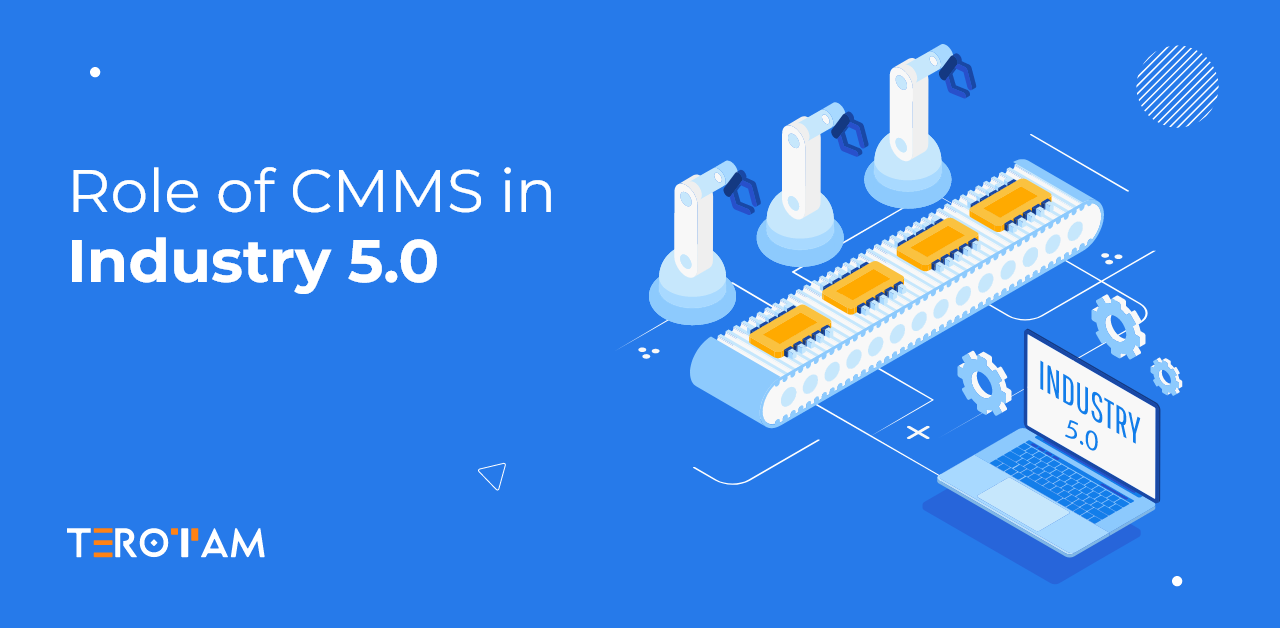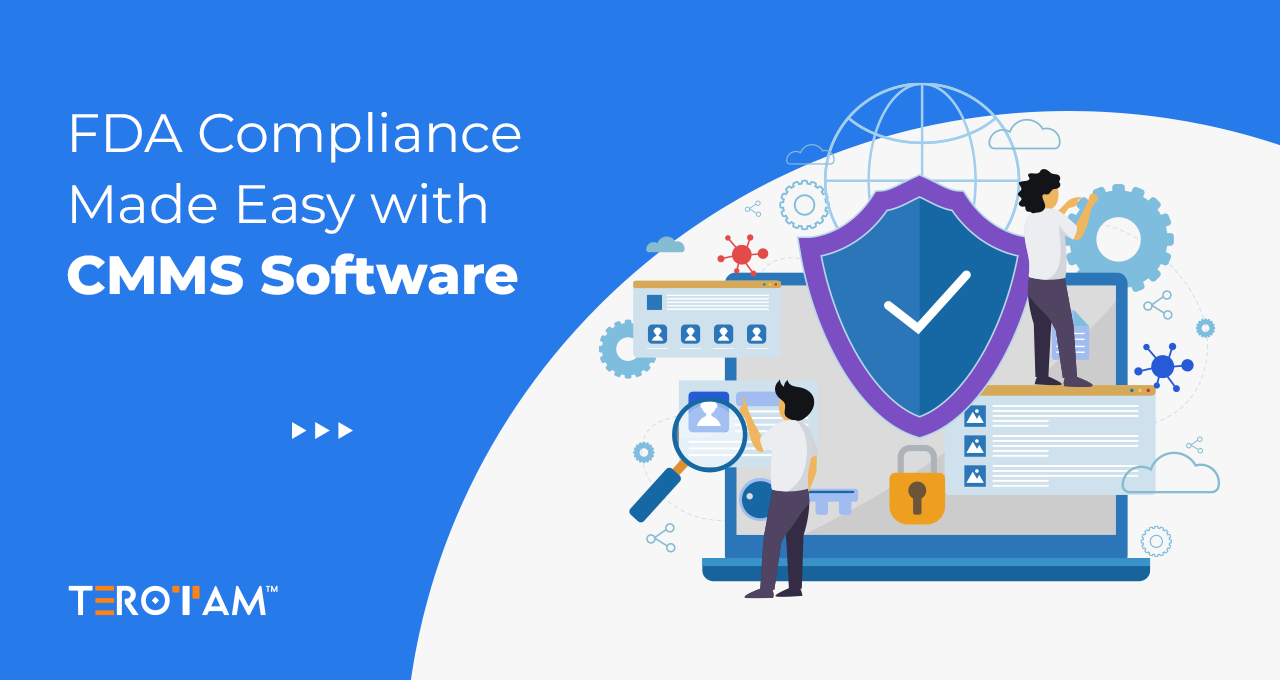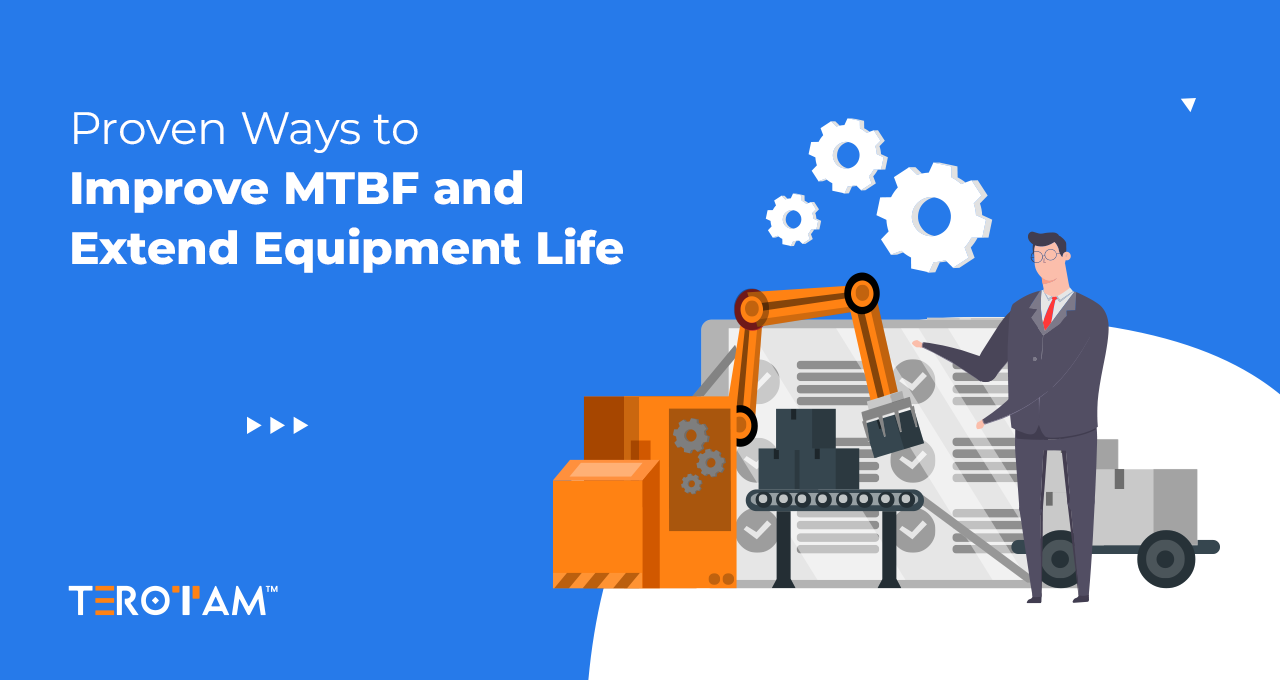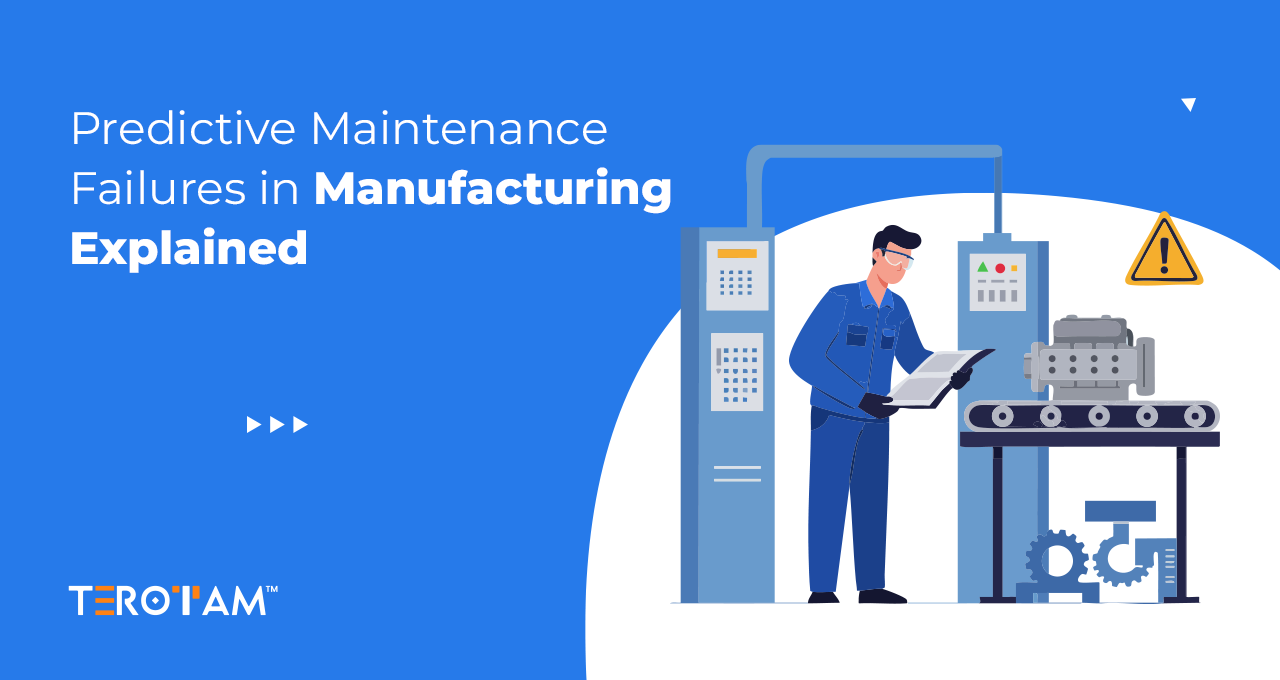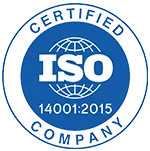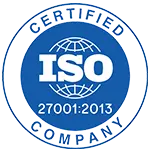Industry 5.0 introduces a production environment where human intelligence and machine automation operate in close coordination. Rather than focusing purely on full automation, Industry 5.0 targets a more balanced manufacturing ecosystem, where smart systems handle repetitive functions, and human input drives strategic improvement and innovation.
In this context, Computerized Maintenance Management Systems (CMMS) are no longer used only for basic maintenance scheduling. They have evolved into integrated platforms capable of supporting predictive analytics, real-time machine monitoring, sustainable asset management, and agile decision-making. CMMS platforms form a critical part of the digital infrastructure required to meet the operational standards of Industry 5.0.
Industry 5.0: An overview
Industry 5.0 builds on the foundation laid by Industry 4.0, combining advanced technologies like artificial intelligence, IoT, robotics, and big data with a focus on resilient, human-centered processes. Key operational goals include:
- Real-time human-machine collaboration
- Operational resilience against external disruptions
- Sustainable production practices and resource optimization
These goals require advanced systems for asset management, predictive maintenance, and resource tracking—functions a modern CMMS platform is built to perform.
The expanded role of CMMS in Industry 5.0
Modern CMMS systems integrate machine learning algorithms, IoT sensor networks, and cloud computing to transform maintenance from a reactive task into a proactive, strategic process. Here’s how CMMS aligns with Industry 5.0 requirements:
1. Predictive maintenance through integrated IoT and AI
Modern CMMS platforms connect directly to industrial IoT sensors installed on machinery and equipment. These sensors monitor parameters like vibration, temperature, pressure, and energy consumption in real time.
Key technical functions include:
- Automatic anomaly detection using AI models
- Predictive analytics based on historical and real-time data
- Scheduling of condition-based maintenance tasks to reduce downtime
This capability shifts maintenance activities from calendar-based servicing to true predictive scheduling, extending asset life and minimizing operational interruptions.
2. Data-driven human-machine collaboration
In Industry 5.0 environments, human decision-making is supported by actionable, system-generated insights. CMMS platforms provide:
- Mobile and remote dashboards accessible through secure apps
- Automated work order generation based on real-time alerts
- Augmented-reality (AR) integrations to assist maintenance teams in troubleshooting complex systems
By automating data collection and preliminary analysis, CMMS allows technical staff to focus on high-level troubleshooting, optimization, and system improvements.
3. Sustainability tracking and resource optimization
A CMMS aligned with Industry 5.0 goals includes built-in modules to measure sustainability metrics. These modules track:
- Energy consumption trends per asset
- Parts and consumables usage rates
- Equipment emissions and environmental impact
By providing detailed operational reports, CMMS systems enable technical managers to identify inefficiencies, optimize resource allocation, and meet corporate environmental targets.
4. Operational resilience and rapid recovery
CMMS systems provide the technical backbone for resilient operations by maintaining a centralized, accessible database of asset specifications, maintenance history, compliance schedules, and critical spares inventory.
Functional outcomes include:
- Automated emergency response workflows
- Standardized root cause analysis tools
- Digital compliance documentation for audits
This ensures that even during major disruptions, facilities maintain continuity with minimal performance degradation.
Key features of CMMS platforms built for Industry 5.0
To support Industry 5.0-level operations, CMMS platforms must offer specific technical capabilities:
- Machine learning modules: Predict equipment failures based on pattern recognition.
- IoT connectivity: Direct integration with industrial sensors for live data streams.
- Real-time work order management: Cloud-based systems with offline access for field technicians.
- Sustainability dashboards: Energy usage, emissions tracking, and compliance alerts.
- Customizable APIs: Integration with ERP, MES, and digital twin systems.
- Role-based access control: Secure and segmented data visibility for different user profiles.
The absence of these features limits the ability of an organization to fully align its asset management strategy with Industry 5.0 frameworks.
How CMMS strengthens the human-centric focus of Industry 5.0
While Industry 5.0 emphasizes human-centric manufacturing, the technical backbone provided by CMMS platforms ensures that human input is applied efficiently. Specific contributions include:
- Reducing repetitive data entry through automated asset monitoring
- Providing access to knowledge bases, manuals, and guided procedures through mobile applications
- Enabling safer maintenance operations by flagging potential risks before technician dispatch
By reallocating human resources to complex problem-solving and system optimization activities, CMMS systems maximize workforce effectiveness without overwhelming teams with administrative tasks.
Conclusion
The shift towards Industry 5.0 demands an infrastructure where machine efficiency supports, not replaces, human expertise. CMMS platforms built with predictive analytics, IoT integration, and sustainable maintenance modules are essential for industries targeting resilience, efficiency, and optimized human-machine collaboration.
Organizations that deploy next-generation CMMS solutions position themselves to meet the technical and operational challenges of Industry 5.0, enabling more agile, sustainable, and intelligent production environments.


